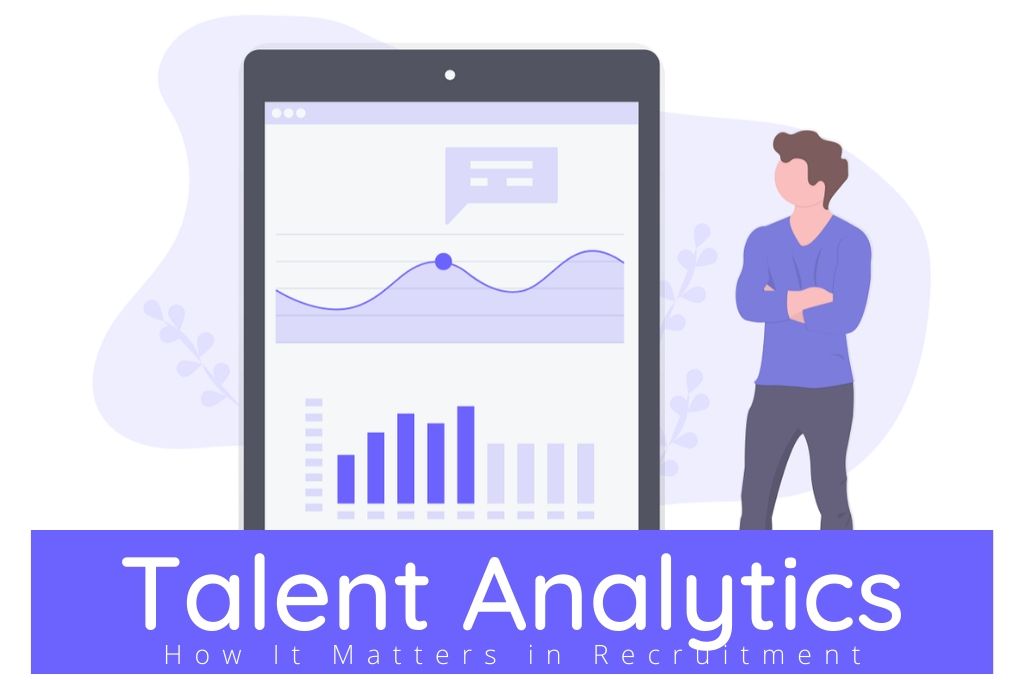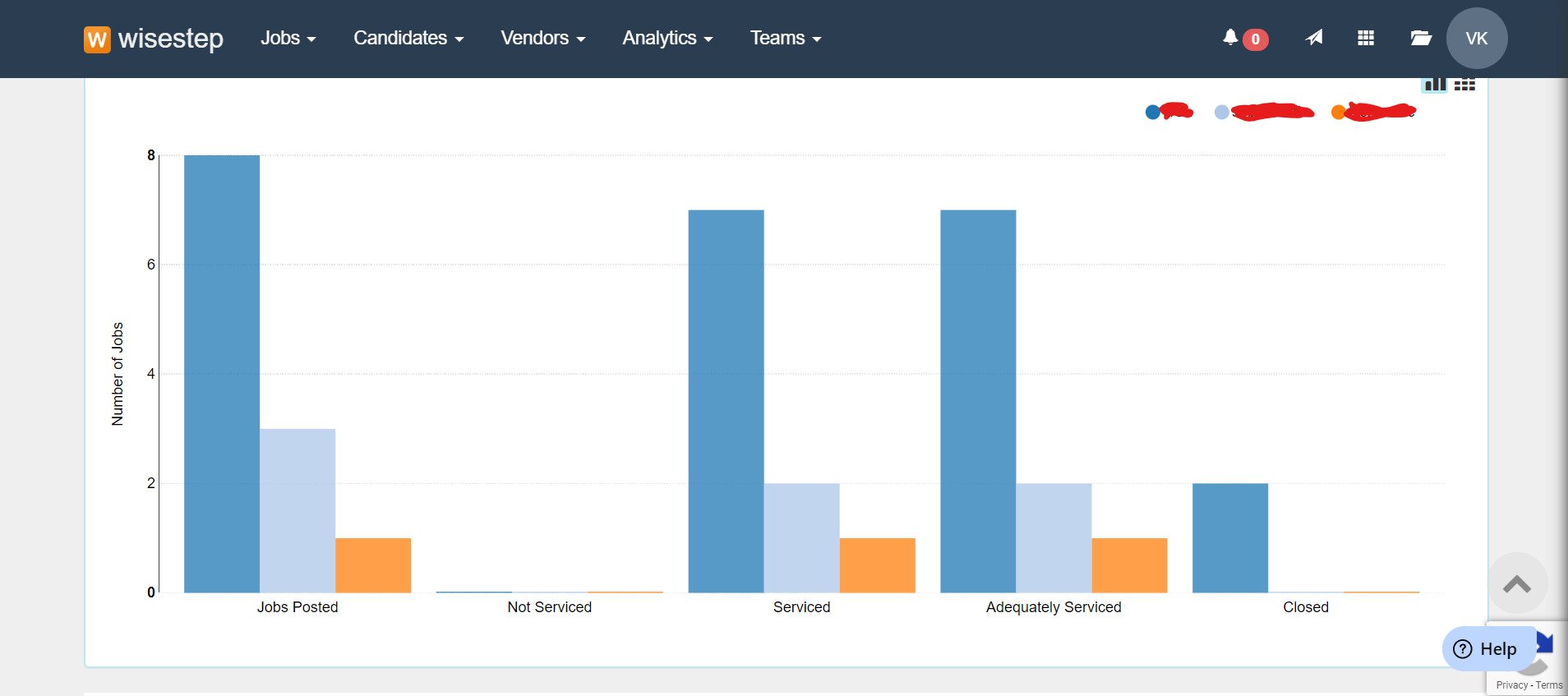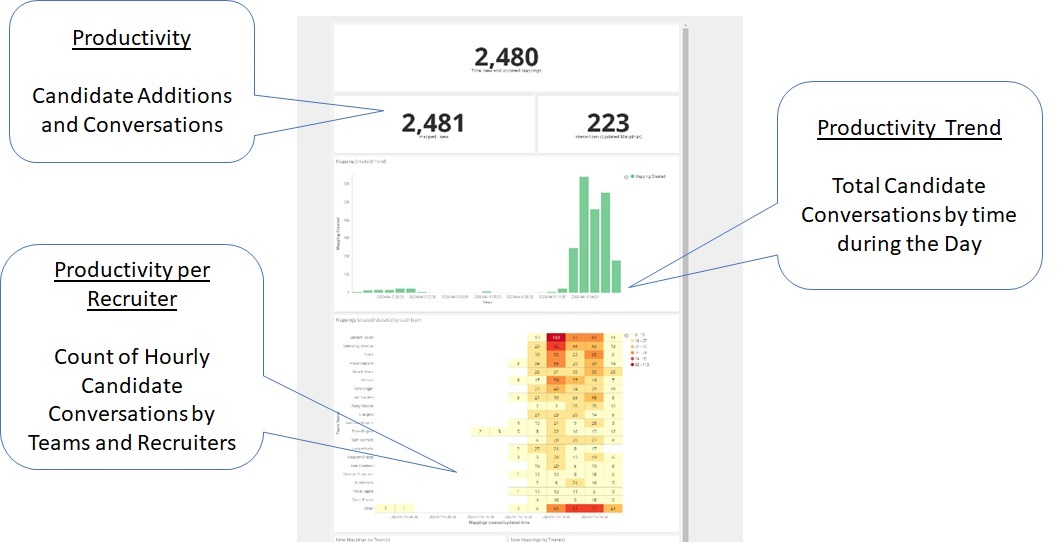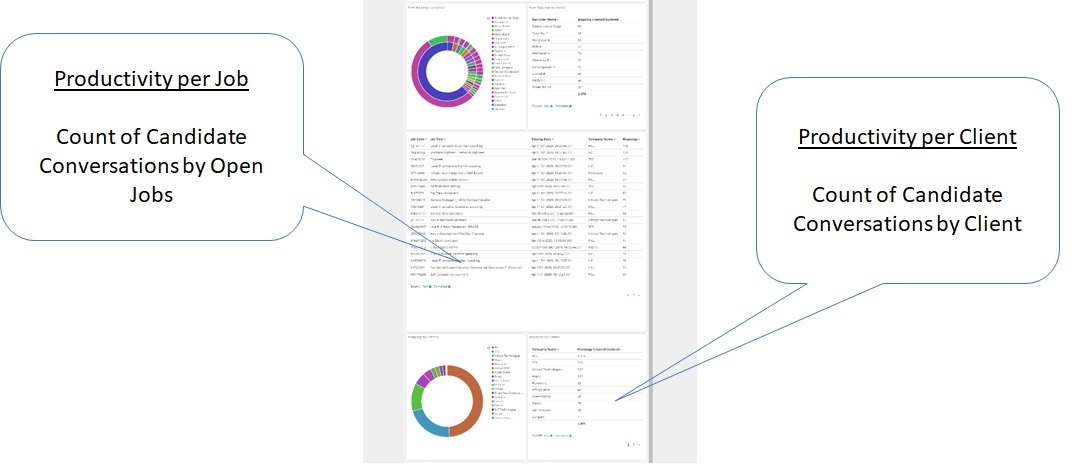The role of analytics is growing across business functions; HR is no exception. Companies are waking up to the idea of integrating Big Data technologies to support the larger HR teams, recruitment functions, performance management, compensation & benefits, and learning & development teams, to name a few. For e.g. the availability of large sets of data, within the recruitment function has provided an opportunity for the teams to source, screen, and hire quality candidates.
Till a few years ago, talent analytics was the exclusive domain of large organizations such as Google, Apple, Microsoft, and the like. However, in recent years, small and medium-sized businesses have also started using analytics to support their HR teams. Talent analytics tools are driving HR performance leveraging a data-driven approach.
What is Talent Analytics?
Talent analytics, which is also referred to as HR Analytics, People Analytics, and Workforce Analytics interchangeably, provides valuable insights into the workforce (which includes the future hiring pool and the existing employees of the company). Gartner defines workforce analytics as “….an advanced set of data analysis tools and metrics for comprehensive workforce performance measurement and improvement. It analyzes recruitment, staffing, training and development, personnel, and compensation and benefits, as well as standard ratios that consist of time to fill, cost per hire, accession rate, retention rate, add rate, replacement rate, time to start, and offer acceptance rate”.
Talent analytics provide actionable insights to enable decision-making, streamline operations, increase team productivity, and amortize costs over a period of time. Based on this data, HR teams can zero-in on best fit candidates, ensure easier process-flows across candidate touch-points, track and predict potential attrition rates across functions.
One of the most important takeaways for HR decision-makers is the effect of HR tech in improving the quality of hiring. Talent analytics does not deal only with the collection of recruiter’s or employee’s data. Instead, talent analytics aims to provide valuable insights into each process by gathering data and then using it to make relevant decisions about how to improve the processes or make informed decisions.
The larger technology players such as IBM, Oracle, LinkedIn, Accenture, Workday, and Capgemini are offering various talent analytics solutions for global customers across industries. There are few small yet emerging companies such as Wisestep, Paylocity, and Compport, who are also offering talent analytics software for small and medium enterprises and start-ups.
Talent Analytics in Recruitment:
Many companies are using analytics to assess the performance of various recruitment channels, to find anomalies in job descriptions and skill-sets, and to draw future scenarios around the demand and supply of talent.
Companies are also using talent analytics to assess employee performance, initiate workforce planning, and optimizing their resource for the future. Talent analytics software is used by many recruitment companies and businesses that hire employees regularly.
Some of the major features of talent analytics platforms within the recruitment function are mentioned below:
1. Tracking Hiring Metrics:
One of the major uses of analytics in recruitment is to track the hiring metrics. The recruitment teams analyze important metrics such as cost per hire, sourcing time/frequency, pass-through rates, time-to-fill, etc on a regular basis using analytics. From a broader perspective, talent analytics optimizes the process of recruitment and helps deploy the resources on the jobs, that require immediate action.
Measuring the metrics is essential to understand how efficient the company is in terms of attracting talent and hiring them. It adds value to the company’s business strategy and provide insights to the company’s management on how effective the recruitment teams are and how they are helping to reach company goals and objectives.
Workable Technologies Limited, which has a global presence, is a cloud-based hiring platform that provides insights into key recruitment metrics such as time to fill, qualified candidates per hire, interview per hire, etc.
Wisestep is a SaaS-based (Software as a Service) candidate CRM platform that offers real-time analytics to track various hiring metrics. With the help of real-time analytics, companies can track the performance of their recruiters and investigate their past performances by downloading the reports on a weekly, monthly, and yearly basis. Customers will able to identify the list of jobs recruiters worked on, analyse the time spent on each job, and calculate their efficiency. The tool also provides data on the past jobs worked by the recruiter and can help analyse what roles have been filled and what haven’t in the past.
2. Pre-screening Candidate:
The traditional methods of recruitment, which includes sorting candidates from hundreds of resumes, increases the cost of the company and reduces the time needed to process the requirements.
According to Bersin Deloitte Consulting, to hire a candidate using the traditional method, the cost of recruitment and number days required to close the profile is way too high for the companies. With the usage of talent analytics tools, recruiters can source from a large candidate pool in their database. The recruiters can get a complete overview of the candidates and reach out to them in a relatively shorter period of time. There are companies such as Oracle Taleo that offer multiple solutions to find pre-qualifying candidates.
Oracle Taleo is a cloud-based talent analytics software that screens the candidate based on questions, competencies, and pre-screening tools to find the ideal candidate for the job. The questions can be created by the hiring manager or recruiters based on which the software will automatically display the qualified resumes.
The competency is used to gather proficiency level and years of experience of a candidate to find the best candidate for a job. A candidate not meeting the required response can be instantly exited from the application process.
Wisestep pre-screens the candidate based on the keywords (strings) used in the job description and the location. The tool automatically identifies the keywords in the job description and provides a list of suitable candidates in a particular location.
3. Candidate Pipeline and Future Prospects
Future job trends can be predicted by utilizing data-driven insights into new and emerging technologies. Talent analytics can analyze the demand for future job roles and predict candidates in geographical locations/hot spots. Armed with these trends, teams can prepare for the future, based on the required skill-sets, the geographical regions that need focus etc.
The Talent acquisition process includes the development of contacts, which are individuals who have never been considered for a job, but have the skills, background, and experience an organization is looking for.
The development of a pipeline for the prospects differs for each company, and it is mainly based on their client’s requirements. For instance, using the Oracle Taleo, recruiters can create the pipeline of candidates for a diverse skill set in different locations. The Taleo pipeline management provides a way to manage the lifecycle of candidates through the state of being a contact in a pipeline to being considered on an open requisition.
IBM’s Kenexa Talent Acquisition Suite is an integrated set of recruitment solutions that helps companies to find the right candidates. IBM Kenexa Lead Manager is an innovative candidate relationship management tool that helps companies to attract and develop relationships with top talent, resulting in a robust pipeline of candidates. Recruitment companies can build robust pipelines with tools offered by IBM Kenexa Lead manager to find prospects.
LinkedIn Pipeline builder service is used to create talent pipelines on those individuals who have already shown interest in the company. Hiring companies can directly reach the candidates when they visit LinkedIn with Personalized Sponsored Content and Recruitment Ads. The companies using the Pipeline Builder can develop their landing page to target the candidates in the pipeline. The interested candidates can share all information (email id, Phone number) with just a click on the landing page.
Wisestep’s active pipeline functionality can help recruiters, hiring managers, and the HR teams to track candidate journeys right from resume submission to the database to shortlisting, covering each level/round of interview to job offers, and joining. One of the significant features of Wisestep’s active pipeline is enabling analysis of recruiter performance. Analysis of recruiter performance could be based on the number of resume submissions, the number of candidates shortlisted for interviews, the number of offers made, and most importantly, how many candidates have accepted and joined the role.
4. Augmenting candidate experience (C&E):
By using talent analytics tools, recruiters can gauge the level of candidate experience. The recruiters can update the real-time engagements with the candidates, which can provide valuable insights to the team. Based on the candidate’s initial contact to moving through various stages of recruitment (from resume submission to candidate interviews), the tools can analyze the likelihood of the candidate on-boarding the company or withdrawing the application.
Candidates are rejecting companies that have outdated systems and old practices. Misspelled names in the email, unpleasant interview process, and no follow up after the interview are some of the reasons for negative candidate experience. Bad candidate experience doesn’t only result in losing the talent but also impacts the brand image of the company.
In 2014, poor candidate experience cost Virgin Media about US $5.5 million in their revenues. About 130,000 candidates applied for the various job in Virgin Media, and 18% of them were their existing customers who had already subscribed to their service. Because of the poor candidate experience during the interview process, about 7,500 of their customers canceled their subscriptions and have moved to their competitors.
Jobvite is a talent acquisition software company that offers Continuous Candidate Engagement (CCE), which is a candidate-centric recruiting model encompassing both technology solutions and strategies to continuously engage candidates in the right way, from first look to the first day. The Continuous Candidate Engagement puts the candidate at the center of the recruitment process.
where the recruiters or the talent acquisition teams will engage the candidate on an ongoing basis from the time they have sourced the resume from the job board.
In Wisestep, a better Candidate Experience with each candidate each time is one of the significant priorities. Email communication between the candidate and recruiter can be done through the Wisestep tool, and those details are captured by the integrated on-board analytics capabilities. Each attempt to interact with the candidate is recorded as an interaction under a conversation. Conversations are visible to all the users of an organization workspace (but only the ones who are assigned to the job can update it). The interaction with a candidate can be useful to understand what the requirements of the candidates are and how recruiters are handling the candidates.
5. Job Servicing Metrics:
- Applicant Per Opening:
One of the most important metrics for any recruitment team is to measure the number of applicants per opening. This can be calculated by the number of candidates/applicants per job opening. The higher the number of applicants for any job, the better is the ratio. However, the number of applicants for each position cannot be considered as an indicator of suitability of the candidates. But a higher number of applicants will be helpful to keep the clients satisfied and increase the rapport with their hiring managers.
Wisestep’s talent analytics can provide insights on how efficiently the recruiters are sourcing their applicants. Recruitment companies or hiring managers can identify the number of jobs posted or advertised, how the jobs have been serviced, including those jobs which are adequately serviced by sourcing more numbers of resumes than needed. With the help of this data, companies can evaluate how attractive their brand is with the candidates, the number of candidates available for each position, and how to manage the process for the position (if they are more number of applicants per opening, the hiring manager might require to filter candidates through a pre-employment test or by other means).
- Turnaround Time:
One of the frequent questions that the hiring manager or the company’s management ask their HR Managers is how much time it takes to fill a position, which is also known was turnaround time. The turnaround time metric is calculated as the days that pass from the date a position opens till the date a candidate accepts an offer (including weekends and holidays) for the same.
Wisestep’s data is helpful to assess how fast the recruiters have found the candidate for an open position and how much time it has taken in the various stages of recruitment before closing the position. The data will also be useful to calculate the productivity of the recruiter
Wisestep analytics provides data on jobs that are hardest to fill (not serviced by the recruiters), help identify the bottlenecks, and assist the recruitment teams in improving the process. Using the data team leaders and hiring managers can re-distribute Not Serviced Jobs to their recruiters and increase the overall efficiency and turnaround time.
6. Real time Analytics:
Real-time analytics is defined as “the discipline that applies logic and mathematics to data and provides insights for making better decisions quickly. For some use cases, real-time simply means the analytics is completed within a few seconds or minutes after the arrival of new data”.
Real-time data and in-depth insights is useful to develop future trends for a recruitment company. Based on past information and current benchmark data, companies can develop proactive decision-making. New-age analytics tools are making real-time data easily accessible, and this is one of the important features that must be utilized by all the recruitment to track their performances and have a competitive edge.
LinkedIn Talent Hub, an Applicant Tracking System (ATS) — is a sourcing and hiring platform that offers real-time data and insights. It was developed to recruit applicants with predictive insights. The Talent Hub will automatically match the profiles with the job posted in real-time. The recruiters can also have tailored candidate search results based on the candidate interaction.
Sympa is a complete HR solution-based company established in 2005. The company’s HR Analytics tool focuses on real-time insights, and their customers can access all the key figures in real-time. Real-time data can also be accessed by third party clients such as outsourced payroll teams.
Wisestep provides real-time insights to the hiring managers, HR teams, and recruiters. This has the potential to empower companies with delivery insights that can be used to develop their recruitment strategies. With the help of real-time analytics, companies can track the performance of their recruiters and investigate their past performances by downloading the reports on a weekly, monthly, and yearly basis. Customers will able to identify the list of jobs, recruiters worked on, analyse the time spent on each job, calculate their efficiency.
Additionally, the platform allows tracking of the interview process for each candidate (which round of interview the candidate has cleared). Interview tracking is a useful tool to analyse candidate performance for each stage of the interview process. For instance, for a software development role, if more candidates are failing to clear the tech round, then the recruiters can shift focus to source and screen candidates who are strong in their coding/tech skills.
7. Productivity:
Teams are always looking for new ways to increase employee productivity; however calculating accurate productivity results can be very difficult. It is nearly impossible without insights. Talent analytics provide a way to create more reliable forecasts on both a micro and macro levels. Human capital management is all about finding new methods to increase the productivity of employees, and talent analytics play a crucial role.
Some of the best practices to increase productivity are:
- Develop metrics that can easily be captured from the available data
- Identify the top performing team members
- Strengthen the employee sourcing process by combining traditional recruitment with talent analytics
- Screen potential employees to improve hiring decisions
LinkedIn Recruiter tool increases productivity of the recruiters by identifying the right candidate in a shorter span of time – using guided search, spotlights, and advance recruitment filters. Recruiters can directly send mails to the candidates using In-mail features or a batch of candidates with a templated one-to-many InMail. The recruiters can also integrate the tool with ATS that offer on-time updates of the candidates.
Wisestep does a different job when it comes to productivity – it measures productivity of the recruiters and the team with the help of insights and data. The productivity can be measured using a single parameter or combination of parameters such as the number of jobs worked, resumes submitted on a daily, weekly, or yearly basis by the recruiter/s. Data in the hiring pipeline and the number of candidates shortlisted for specific jobs or selected for a job can also be used to measure productivity.
8. Background Verification:
Data analytics, along with background verification of the candidate has the potential to greatly improve talent acquisition. Research indicates that 48% of the HR teams are busy with other tasks and that they cannot verify the candidate qualification and background.
Companies such as Infomart, which provide background verification, are developing tools for candidate background check. Infomart has developed an identity verification tool ASAP ID that verifies candidate information before initiating a background check, and the candidates can do it from their mobile phones.
HireRight is an employee background screening company that has developed a data visualization platform to monitor background screening program. By using the self-service dashboard, organizations can identify, view, analyze, and understand how their background screening program is performing. The Key Performance Indicators (KPI) will be providing information on background check volume, turnaround time, criminal hit rates, and other valuable insights about the candidate.
Trusted Employees, is a part of The MRI Software Company, that has developed analytical and reporting insight tools. The tools use three types of a scoring model
- Convenient
It is easy to interpret data results with color-coding applied to each criteria set - Consistent
It is pre-set criteria that companies can quickly assess an applicant’s qualifications and history - Customized
It is offered as a free add-on service. Companies can customize the scoring model based on unique criteria
Trusted Employees offer Management Reports that include report costs (average and total), package comparisons, criminal statistics, drug screening statistics, applicant information, hiring decisions, and DMV offenses, to name a few.
Conclusion:
Talent analytics does not only deal with data pooling – instead, it aims to provide insights into each process by gathering relevant data and then using it to make decisions about how to improve the processes. Talent analytics tools are not only limited to the recruitment firms, but are being also used by quick-growing companies that need to hire new employees to maintain growth.
The businesses that are using these tools are thus spending lesser time on non-productive jobs, and on the other hand, customer engagement, employee engagement, and productivity have witnessed an upward tick. The traditional ways of hiring candidates will be a thing of the past, and slowly companies will be moving towards Big-data, Artificial Intelligence, and Analytics, which will assist them in shortlisting and hiring better candidates, with lesser resources and cost.
Before finalizing the Talent analytics tool, companies need to understand what impact talent analytics tools can bring on their businesses. Companies also need to keep track of the recent trends in talent analytics as the technology is always reinventing, and having outdated systems will never provide the desired results. Chatbot and voice assistants, for example, conduct initial candidate contacting and screening. Companies can identify attrition risks and pre-emptively take measures to pre-empt the situation.
Apart from the technical aspects, companies also need to investigate other major factors. Talent analytics tools like Wisestep align with the business objectives. Wisestep understands the needs of HR teams and hiring managers – and have customized the platform according to their needs. Customer support must also be one of the top priorities; having a great product with bad customer service will never help the business. Wisestep provides the top quality support and strives to offer best in class customer service to its clients.
Talent analytics will be the transition of one-time to Real-Time. In the past, based on the organization’s needs, different methods such as questionnaire were used, focus interviews were conducted on all the stakeholders (recruiters, candidates, HR manager, hiring managers and company owners) as part of the workforce analytics, the data was gathered and based on the findings, a report was prepared. The study was undertaken to resolve only the critical problems, and the data would not be useful if other issues arise in the recruitment process.
However, in the current job environment, the companies are always facing new challenges, and require real-time data to resolve the issues and to be prepared for other challenges. To acquire real-time data, companies can develop in-house analytics tool; it is a time-consuming process and requires massive funding. Companies can also tie-up with firms like Wisestep that offer the latest talent analytics tools at an affordable price, uses advanced technologies, safeguards candidate data, and follows all the legal aspects.













































